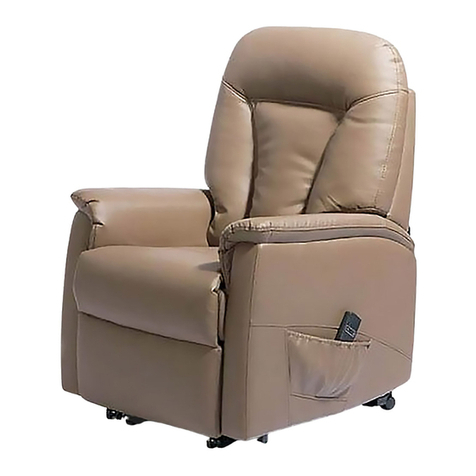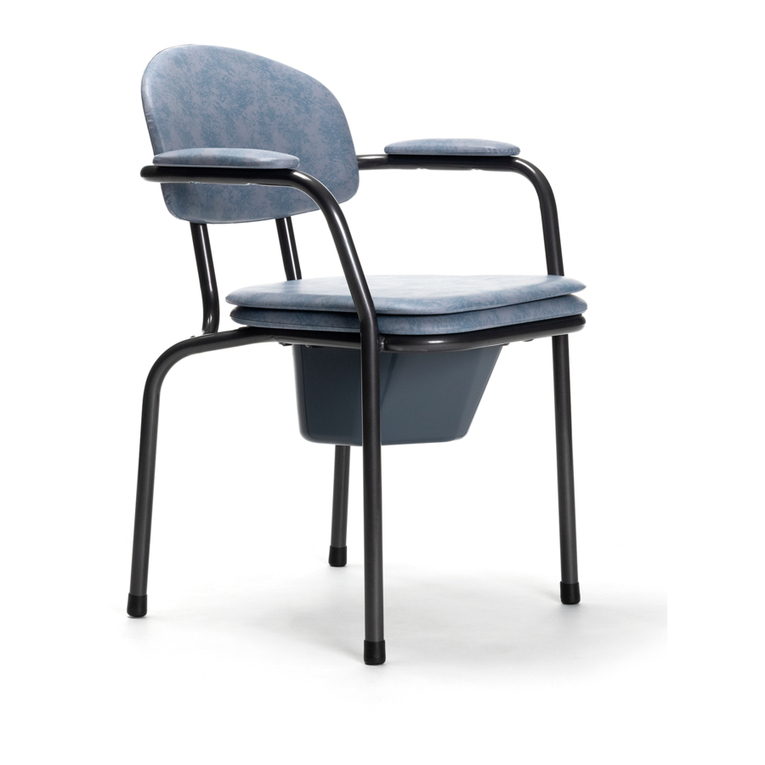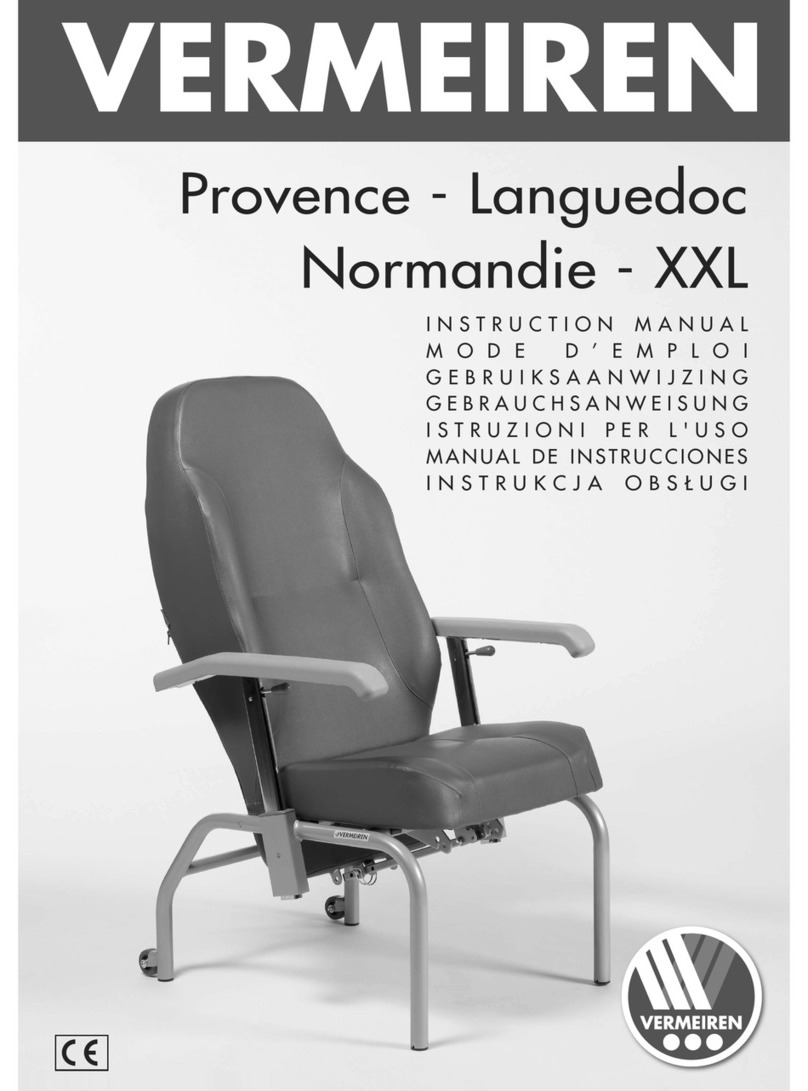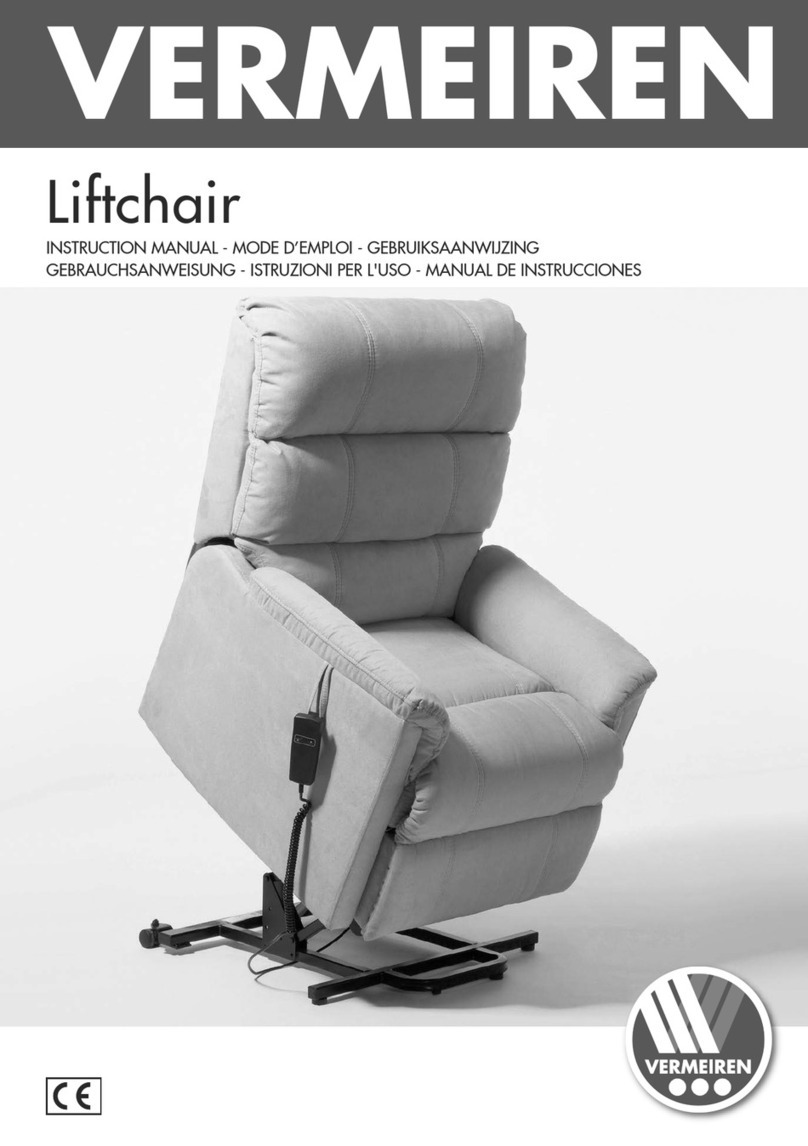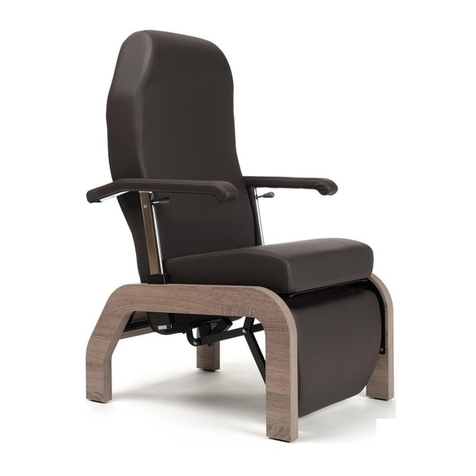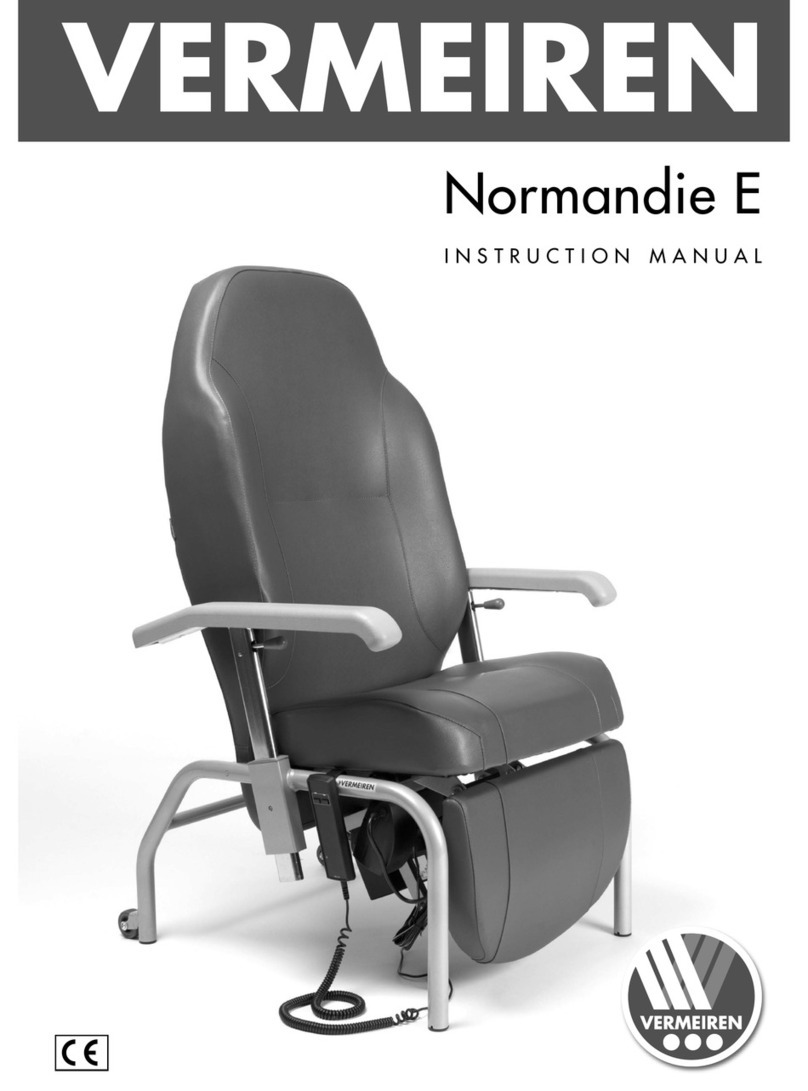
Liftchair
2014-10
Page 3
1.3 Care
The cleaning of your liftchair is possible with household products.
1.3.1 Upholstery
The cleaning of the upholstery shall done as follows:
Clean the upholstery with a cloth moistened in warm water. Take care that you do not
soak the upholstery.
Use a mild commercial detergent for removing stubborn dirt. We strongly advise you to
first test the cleaning product on a hidden part of your liftchair.
Stains can be removed by using a sponge or a soft brush.
Do not use strong cleaning liquids like solvents, nor use hard metalbrushes.
Never clean with steam and/or pressure washers.
Do not wet the electrical parts.
Damage caused by the use of improper cleaning agents is not the responsibility of
Vermeiren.
1.3.2 Coating
The high quality of the surface layer guarantees optimal protection against corrosion. If the
outer coating is damaged by scratching or in some other way, get your specialist dealer to
repair the affected surface.
When cleaning, only use warm water and normal household detergents and soft brushes and
cloths. Ensure that no moisture gets into the components (tubes, electronics, ...).
Dulling can be avoided by lightly greasing steel parts with Vaseline.
1.3.3 Electronics
Before starting, it is important to unplug the power cable. Wipe the handset with a cloth
moistened by a few drops of a commercial domestic cleaner. Do not use any abrasives or
sharp-edged polishing equipment like a metal scrubber or brush, since these can scratch the
surface of the handset.
1.4 Inspection
In principle we recommend one inspection every year, and a minimum of one before usage is
resumed. All of the following checks must be performed and documented by authorized
persons:
Visually check the frame parts for plastic deformation, cracks and impaired functioning.
(basic frame, seat frame, back frame, motor suspensions).
Check the solidity and seating of all screws.
Visually check for damage to the paintwork (danger of corrosion).
Check the plug connectors for corrosion or damage, since it could affect the efficiency of
the electric parts.
Check the cabling (especially for: crushing, abrasion, cuts, visible insulation of the inner
conductor, visible metallic veins, kinks, lumpiness, color changes of the outer sleeve,
brittle spots).
Electric cables to be securely placed to avoid shearing, crushing and other mechanical
stresses and strains.
Check the motors for adjustments (seat inclination, backrest inclination).
Completeness of the delivery condition, instruction manual available?

